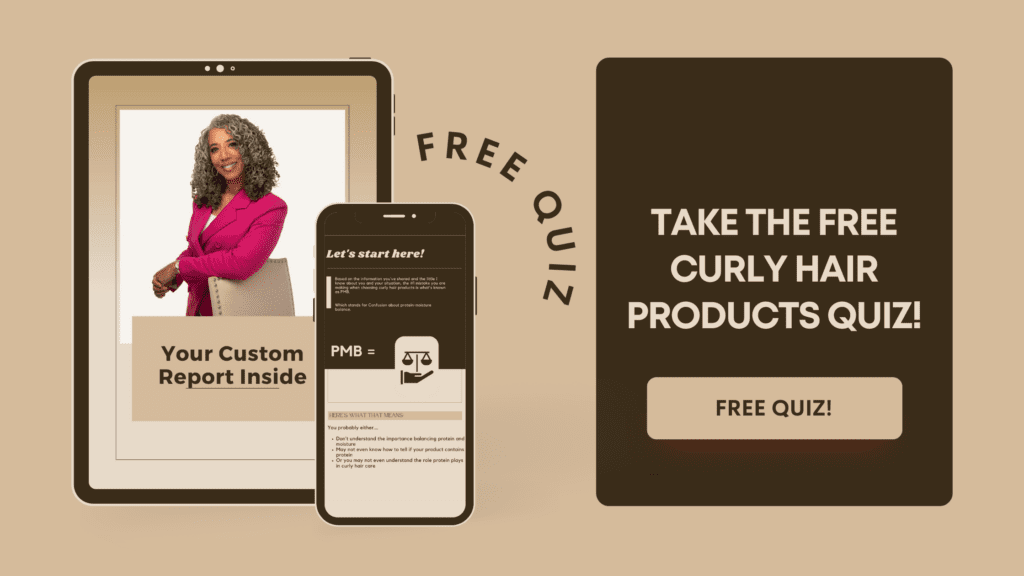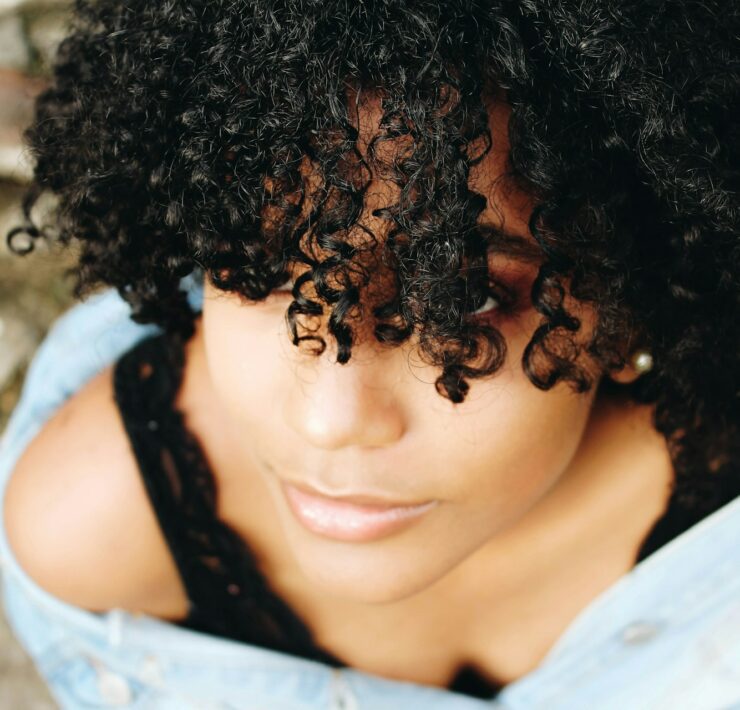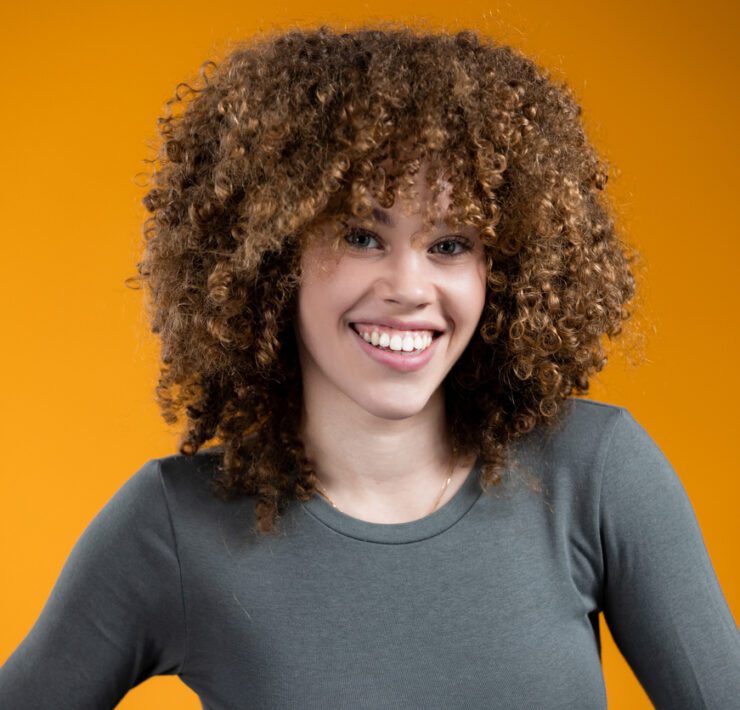
For strong, bouncy, and well-defined curls, our hair needs a balance of protein and moisture.
Without sufficient protein, hair will feel soft, lack the strength to hold up curls, and when wet, overstretch. But conversely, protein overload can lead to brittle, straw-like hair that hardly stretches at all and easily breaks. When hair breaks, it may appear it is not growing much or at all when in fact it is.
How can you tell if your hair has too little protein or is protein overloaded?

When curls need protein:
- Low elasticity: hair strands stretch far but do not return to normal shape (no bounce) or break
- Hair feels overly soft and lifeless
- Often happens to high porosity hair
- Strands fall out while brushing
- Hair looks stringy & limp when wet
- Hair feels mushy or gummy when wet
- Hygral fatigue
When curls have protein overload:
- Loss of elasticity (loose curl pattern): hair strands barely stretch & snap immediately
- Often happens to low porosity or coarse hair
- Hair is dry, brittle & stiff
- Loses shine and luster
- Straw-like feel
- Frizz
- Excessive shedding
- More knots and tangles
- Hair feels rough
When curls have the proper amount of protein and moisture:
- Balanced elasticity: hair strands stretch and then return to the previous length
- Strong & shiny curls
- Bouncy & defined curls
- Good volume/thickness
- Frizz-free curls

Does hair porosity influence the need for protein?
Yes! High porosity hair may need more protein than low porosity or thin hair. Too much protein for low porosity, coarse, or thin hair can lead to protein build-up and hair breakage.
High porosity hair
- Highly porous hair strands have more gaps & tears that quickly absorb/lose moisture leading to tangles and frizzy strands
- Hydrolyzed protein seals these gaps to increase the strength & thickness of hair strands
- Seek products with protein for healthier curls
Low porosity hair
- Low porosity hair is healthy and protein treatments can lead to protein overload resulting in dry and brittle hair
- Low porosity and coarse hair may be more protein-sensitive
- Fine hair can become overloaded with protein
What is a Protein Treatment?
A protein treatment is an intensive masking or conditioning therapy that binds large proteins to the cuticle layer of the hair strands to increase strength and reduce damage. Using rice water is a popular DIY protein treatment.
Protein treatments may also include small peptides (from hydrolyzed proteins) and amino acids that diffuse into the hair cortex to improve physical and mechanical characteristics of hair and repair protein damage caused by chemical treatments.
Protein treatments have many benefits including increasing the strength & shine of curls, adding elasticity and volume, and reducing frizz. Protein treatments have high amounts of protein and are thus not the same as using products that have some protein in them.

What are the most common proteins in hair products?
- Hydrolyzed protein
- Keratin
- Collagen
- Rice/Soy/Milk/Wheat Protein
- Silk
- Quinoa seed extract
- Cystine Bis-PG-Propyl Silanetriol (a derivative of keratin)
- Oat flour
- Amino acids (silk, milk, wheat, etc.)
Frequency of Protein Treatments
Most experts recommend protein treatments every 3 weeks – 2 months to increase hair resilience and avoid protein build-up in hair strands. Many shampoos, conditioners, and stylers contain protein in small amounts and can be used regularly. Most curls need a little bit of protein and lots of moisture to keep hair strong and healthy.
Most protein treatments have hydrolyzed proteins, amino acids, fatty acids, and vitamins as key ingredients. Look for products that include the words Strengthening, Restructuring, Resorting, Reconstructor, Repairing, Rebuilding, or Nourishing in the product names.
And do not underestimate the value of a healthy diet and hydration by drinking a lot of water throughout the day.
Read this article to learn more about proteins and protein treatments.
If you do not know your hair characteristics, take the Curly Hair Quiz.
Some sources we found helpful:
https://www.ouidad.com/blog/curly-hair-routine-101/hair-protein-products-for-curly-hair
https://www.letscurlup.com/blogs/haircareblog/the-art-of-balancing-protein-and-moisture
https://www.heycurls.com/blogs/thehue/the-ultimate-guide-to-high-porosity-hair
https://www.carolsdaughter.com/blog/hair/hair-care-tips/protein-for-hair.html
https://www.naturallycurly.com/curlreading/home/top-8-protein-treatments-for-natural-hair-hi
https://www.redken.com/blog/haircare/5-signs-your-hair-needs-a-protein-treatment
Basit A, Asghar F, Sadaf S, Akhtar MW. Health improvement of human hair and their reshaping using recombinant keratin K31. Biotechnol Rep (Amst). 2018;20:e00288. doi:10.1016/j.btre.2018.e00288






